Tera beginners guide
Learn the ropes with our tour of Tera
Combat and Character Customization
The first thing you need to know about Tera is that its combat is entirely different from any other MMO. In the center of your screen is a targeting reticle. You need to actually aim this thing at enemies to land a hit. There is no “chance to hit” or “hit cap” statistic here--your aim is what counts. Keep in mind your weapon or spell must make a physical connection with an enemy’s hit box--the same holds true for when enemies are attacking you. It’s important to note that every class in the game has an “escape” ability, whether it be a backstep like a Hunter’s disengage in WoW, or a combat roll. This means you can conceivably solo some high level elite monsters (called BAMs--big ass monsters--in Tera) if you master the art of timing dodges to avoid enemy attacks. You can even play this with a gamepad--and it works surprisingly well!
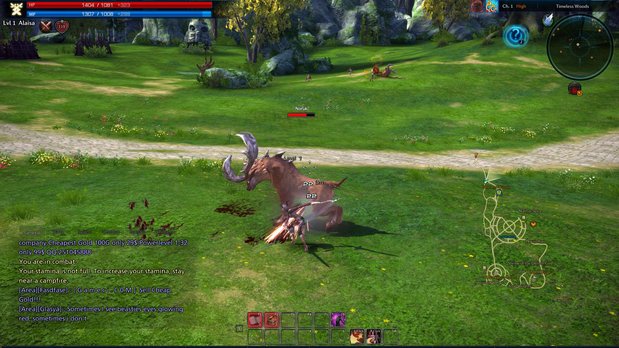
For melee classes, combat is somewhat comparable to The Witcher 2. When targets are moving, you’ll often have to lead them so your giant sword/axe connects. Aside from the Warrior class (we’ll get into class specifics later), melee attacks are slow. If you aim where the target is currently standing, chances are your enemy will just kite you to death. Anticipation is key.
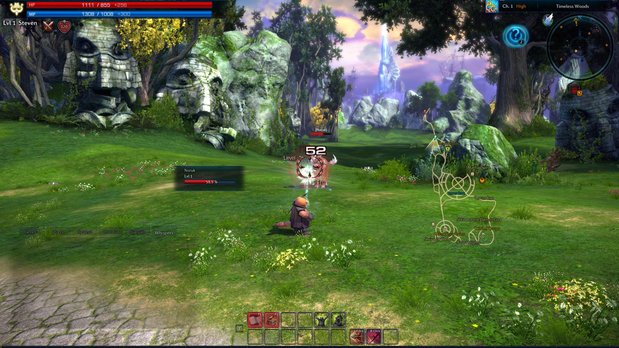
For ranged classes, combat is like a lite third-person shooter. Archers and Sorcerers have to line up a shot for their abilities to hit. Again, anticipation of enemy movement is important (more so for Sorcs), and utilizing back-step abilities (every class has some kind of escape ability) is vital for survival. Even healers have to aim their healing spells, which adds a new layer of excitement to intense battles. It’s not enough to just stand somewhere near the tank and smash your healing - you have to be aware of everyone’s location, and since you have to aim, line of sight is more important as ever.
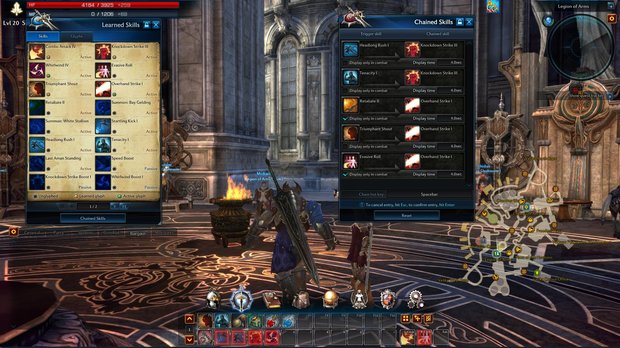
In most MMOs, memorizing a “rotation” is essential for maximum DPS or tanking. While rotations are still relevant in Tera, they’re a bit more manageable thanks to the chained skills feature. This essentially lets you build an ability macro, linking certain abilities together to create custom combos. Using a skill that’s chained to another causes the linked ability to pop up on your screen--just press the spacebar to initiate the second ability (so long as you have enough mana to use it).
For example, a Slayer can use Knockdown Strike, which causes Overhand Strike (the next ability in the rotation) to pop up on the screen. All a player has to do is press the space bar to activate the ability, which then links to the Whirlwind skill. Provided enough mana, players can go through their entire rotation by initially activating just one ability on the hot bar and setting up links to chain into the rest of their skills.
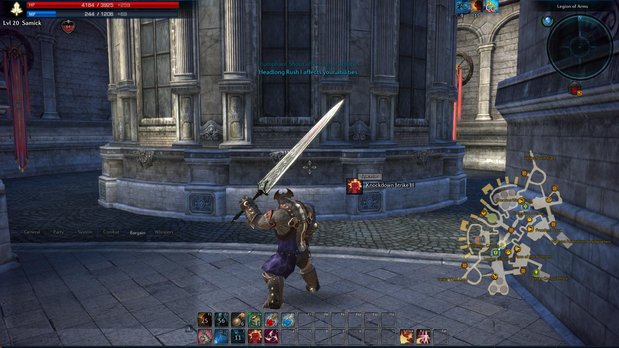
This feature is another reason this game works so well with a gamepad--you never have to worry about missing an essential skill in your rotation because there is no hit cap. So long as you aim properly and are close enough to an enemy, your attacks will land. It’s also nice because you can keep your eyes on the action instead of staring at cooldown timers on your action bars.
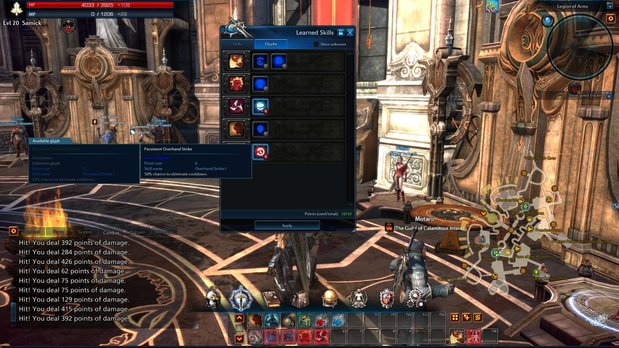
Tera doesn’t have a talent tree system--not in the traditional sense, anyway. Instead, you can buy glyphs from merchants in the city of Velika once you reach level 20. Glyphs are linked to specific abilities and cost a set amount of glyph points to activate; you have a point cap, and because some of the more powerful glyphs require more points to use, you have to consider the benefits and costs of each very carefully.
For example, the Slayer DPS class can purchase the Persistent Overhand Strike glyph, which has a 50% chance to reset the cooldown of the Overhand Strike ability when used. This is one of the class’s main DPS abilities, so obviously the chance to reset the cooldown is a good thing--but it costs 6 points to activate. At level 20, you only have 10 glyph points available in your pool.

Sign up to the GamesRadar+ Newsletter
Weekly digests, tales from the communities you love, and more
Ryan was once the Executive Editor of GamesRadar, before moving into the world of games development. He worked as a Brand Manager at EA, and then at Bethesda Softworks, before moving to 2K. He briefly went back to EA and is now the Director of Global Marketing Strategy at 2K.



